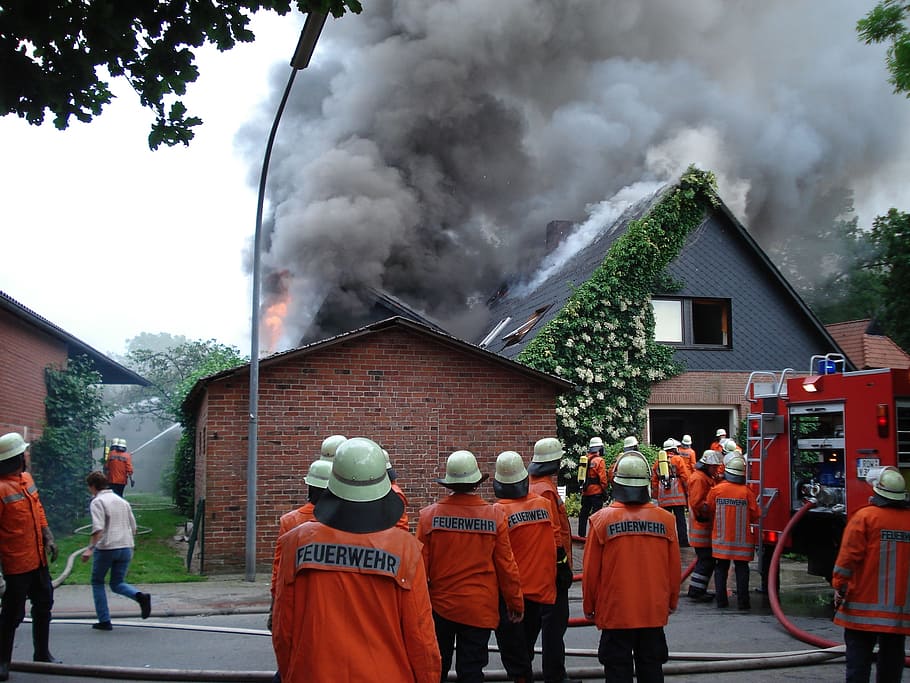No business owner can predict the onset of a disaster; it can occur anytime. Ideally, your robust fire-safety system installed by a reputable fire stopping London company is your front-line defence against hazards. However, Fire Evacuation helps minimise the chances of fires, not eliminate them.
When a disaster strikes, there is chaos everywhere, and without a clear plan, a fire hazard can lead to fatal injuries and even loss of life. Therefore, having an efficient fire evacuation plan is imperative for modern businesses. Having a solid fire evacuation plan in place will go a long way in protecting your staff and premises.
Are your personnel trained in fire stopping and fire prevention, and prepared in case a fire event occurs on your premises?
Is your company equipped with the necessary active and passive fire protection equipment and an efficient exit plan? If not, you should plan for it right away!
This article will look at what a fire evacuation plan is and how to create one. Read on to optimise your business’ fire safety and keep you & your staff protected.
Fire Evacuation Plan – Definition
A fire evacuation plan is a strategy devised by businesses and residential buildings that outlines the steps to follow in case of a fire hazard. The instructions of an evacuation plan will guide the staff and other occupants of the building to evacuate the building in an orderly manner safely.
This plan is in no way an alternative to Passive fire protection London systems. Instead, it acts as a last resort that allows the occupants to vacate the building while your fire-stopping system is working to minimise fire spread.
Step-By-Step Guide To Prepare An Efficient Fire Evacuation Plan
Identify The Risks
Before making an evacuation plan, the first and most crucial step is to examine the building properly and identify potential hazards. Most common fire sources in commercial buildings include –
- Heaters
- Electronic wiring
- A.C Ductwork
- Cooking & Heating Areas.
- Smoking zones.
With a comprehensive active and passive fire survey in London, you can figure out all the potential hazards and fire ignition sources on your premises.
After installing necessary measures such as alarms, fire doors, fire sealants and firestop insulation as per the survey, the next step is to inform the staff members and put up appropriate signboards in the building.
Assign Roles
The next step is to assign safety roles to key employees like managers and team leaders. These individuals will conduct regular inspections, communicate the regulations with other members and take care of the equipment maintenance.
In fire emergencies, swift and accurate actions are crucial; hence, evacuation procedures should be assigned to someone who can execute prompt evacuation and ensure that all the occupants have evacuated the building safely.
You can even have a dedicated employee to keep track of and distribute necessary preparedness packages and regularly maintain fire safety systems.
Create A Communication Plan
Along with swift action, proper communication is also essential during a fire hazard. Effective disaster communication plans can play a colossal role in preventing fatal injuries and deaths.
You should create a strategy for communicating during a fire crisis. Moreover, you should also curate a communication list that includes emergency numbers of local hospitals and care centres. You can also have the details of clients, suppliers and distributors to keep them informed about the hazard.
This list should be placed strategically so that you or your employees can grab it quickly before exiting the premises.
Finalise Your Fire Evacuation Plan
Once all the details are mapped out, it is time to put the plan in writing. Finalise the steps of your plan and note them down in detail to share the plan with all the company members.
After the final documentation of your fire safety plan, you can host a meeting to go over the details and provide each employee with a customised fire safety handbook tailored to your business.
Practice Regularly
The last and final step of a fire-hazard evacuation plan is to practice evacuation procedures at regular intervals. With practice, the employees will learn about the safest exit routes. In case of a fire, they will be able to vacate the building orderly and safely.
In addition, it allows employees in fire safety leadership roles to rehearse their lines while allowing others to identify who those leaders are. Employees will feel more secure knowing that your company is well-prepared for disasters after seeing their peers in action.
The dos and don’ts of fire evacuation-
While every hazard is different, some dos and don’t strategies apply to all fire emergencies, these guidelines should be printed and displayed in areas like canteen or elevators.
Dos
- Turn on the nearest fire alarm.
- Share exit plans with visitors and escort them safely out of the building.
- In case you hear an alarm, immediately reach the assembly point.
- If you find any inadequacies in any part of the safety system like fire extinguishers, firestop insulation, firestop sealants, alarms etc., inform the management immediately.
Don’ts
- Use elevators.
- Cause confusion and panic.
- Collect belongings when leaving.
- Try to fight the fire without proper training or equipment.
Concluding Thoughts
By creating a fire evacuation plan, you will be taking a significant step towards protecting your employees and the company’s assets. We hope that this simple guide will help you formulate a safe and effective evacuation procedure.
For more information about making your plan more efficient or other fire safety guidelines, contact your nearest Passive fire protection London company.

